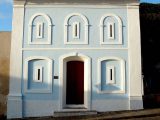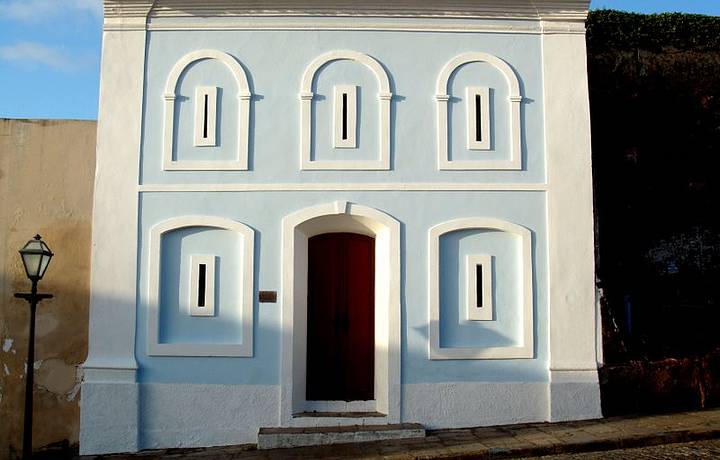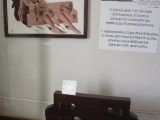Este post também está disponível em:
Português
English

Cafua das Mercês in São Luís do Maranhão is a former slave depot, the place tells the history of black people through the exhibition of works of art and objects from the time of slavery, such as instruments of torture.
Cafua das Mercês or Museu do Negro (Black Museum) currently houses the centre for the preservation of black memory.
The house has a collection that tells a little of the history of the arduous life imposed on the slaves who lived in our city at the end of the 18th century.
Among the variety of items on display in the museum, the most notable are objects of worship used in religious ceremonies, such as statuettes, gourds, pipes and pairs of tambor de mina.
Also preserved are instruments of torture reminiscent of the suffering endured by blacks from Africa who arrived in Maranhão – such as the vira-mundo, a rectangular piece of wood, open in two halves, with holes, where the wrists and ankles of the slaves were placed and which was closed with a large screw or padlocks arranged at one end;
Watch the video “Cafua das Mercês – Museu do Negro”

Cafua das Mercês – Museu do Negro
Palmatórias, used as a pedagogical and torture method, iron clappers and various ornaments are also part of the museum’s permanent collection.
In the internal courtyard of the Cafua, lined with stonework and surrounded by a high stone wall, there are a pair of millstones (part of the mill responsible for grinding grain) and a replica of the Pelourinho that was located in front of the Carmo Church, built on the occasion of the foundation of the museum, whose original was destroyed when the Slaves were freed in May 1888.
Learn more about the Carmo Church, in João Lisboa Square.

On the upper floor, today, an exhibition of African masks, statuettes and costumes recently purchased by the Historical and Artistic Museum of Maranhão (MHAM) completes the collection of the house of culture.
There are more than 20 pieces from Baule, Melinke, Dogon, Punu and Senufo groups, among others, carved in wood or made from beads and plant fibres.
For the head of the State Museology Division, Concita Monteiro, the Cafua das Mercês is not only a space for preserving local culture, but mainly for communicating this memory, to the point that the visitor identifies with the museum.
“When entering these environments we become subjects of history, because this is a place of transformation of society,” he said.
According to the historian, unlike tourists, the Maranhão people have unfortunately not yet been awakened to the visitation of museum spaces.
House was a point for the sale of slaves
Located on Rua Jacinto Maia, in a neighbourhood that once had a commercial tradition, the small sobrado of Cafua das Marcês – a word that originates from the Bantu dialect, meaning cave, dark and isolated place – was a witness to the suffering experienced by slaves, mostly of African descent.
With a uniform façade and two floors in the colonial style, maintaining original architectural features, there were no windows in the Cafua, only single arrows for the entry of light and ventilation, which demonstrated the oppressive and undignified conditions in which blacks lived in times of the Empire.
This was the site of the São Luís slave market, a veritable auction square for black people.

They would disembark at Portinho and proceed to the sobrado where they would be crammed into small rooms to then be displayed with a sign hanging around their necks indicating their price, waiting for a buyer.
The Cafua das Mercês was acquired by the State Government in 1970, restored and opened to visitors two years later, when the Museu do Negro was inaugurated on 5 February.
Cafua das Mercês – Museu do Negro
Where: Rua Jacinto Maia, 54, Praia Grande, next to the Convent of Mercês
Visitation: Monday to Friday, from 9am to 6pm. Free admission
Tourism and Travel Guide of São Luís do Maranhão



















